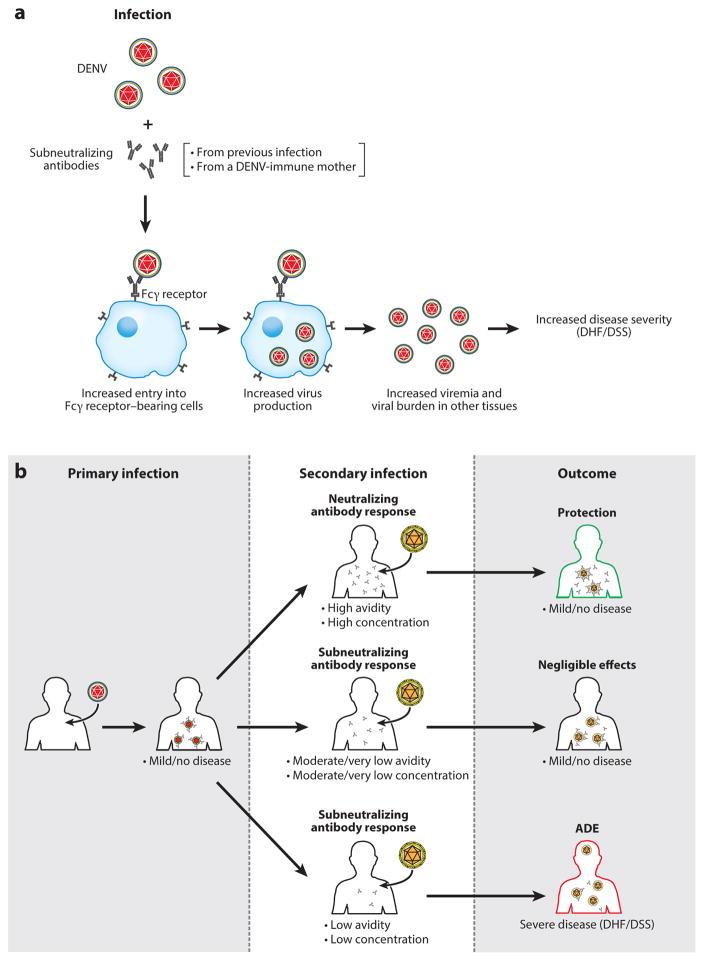Figure 3.
Simplified scheme of outcomes resulting from antibody dynamics: ADE versus protection versus negligible effects. (a) According to the ADE hypothesis, antibodies that are subneutralizing in quality or quantity bind a cross-reactive virion, and this immune complex gains access to permissive cells bearing the Fcγ receptor. Increased viral replication and viremia result in severe disease (DHF/DSS). (b) Antibodies are generated in response to primary infection. At the time of future infection by a cross-reactive virus, four states of antibody CAC result in three categories of clinical outcomes. If CAC is high, then the second infection is neutralized without causing symptoms. If CAC is moderate or minimal, then virus infection is controlled through other mechanisms and Abs have negligible effects. If CAC is low, then antibodies enhance infection and result in severe disease. Abbreviations: Abs, antibodies; ADE, antibody-dependent enhancement; CAC, combined avidity and concentration; DHF/DSS, dengue hemorrhagic fever/dengue shock syndrome.

